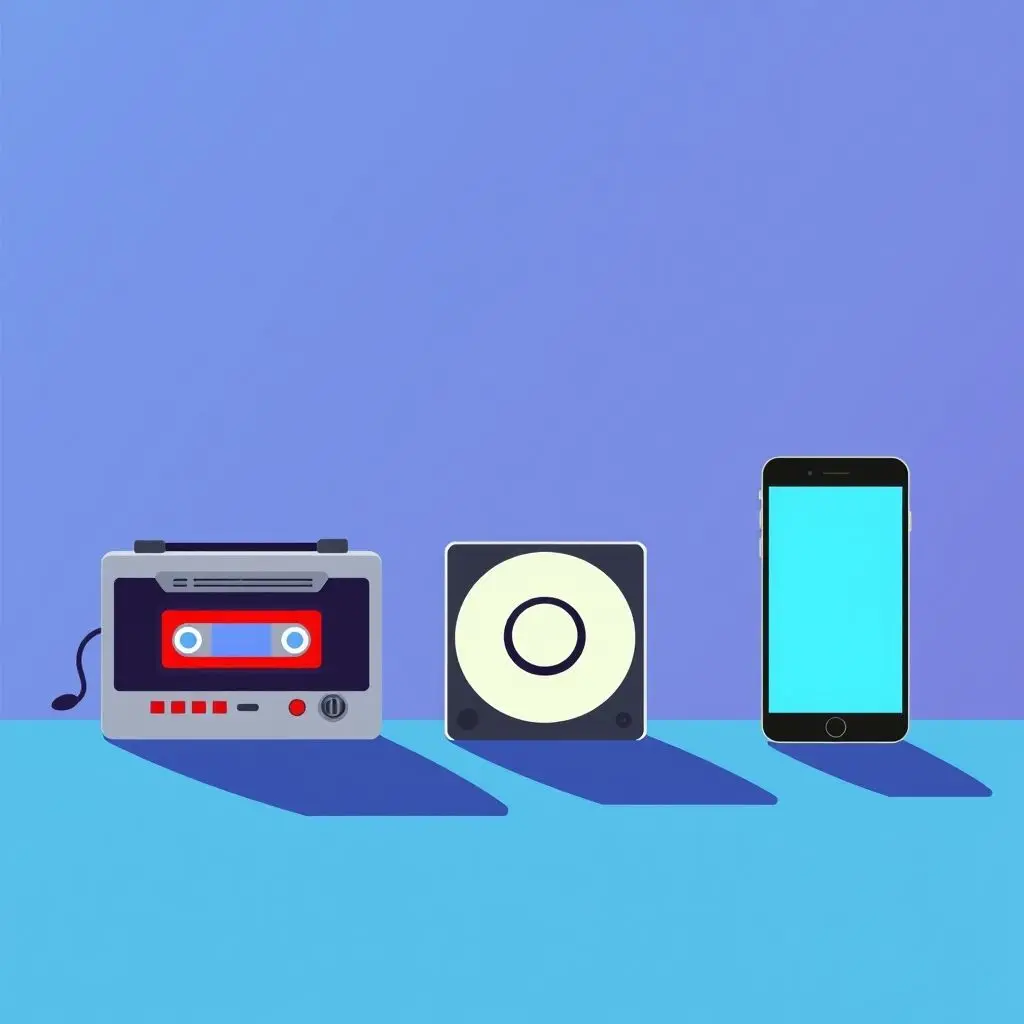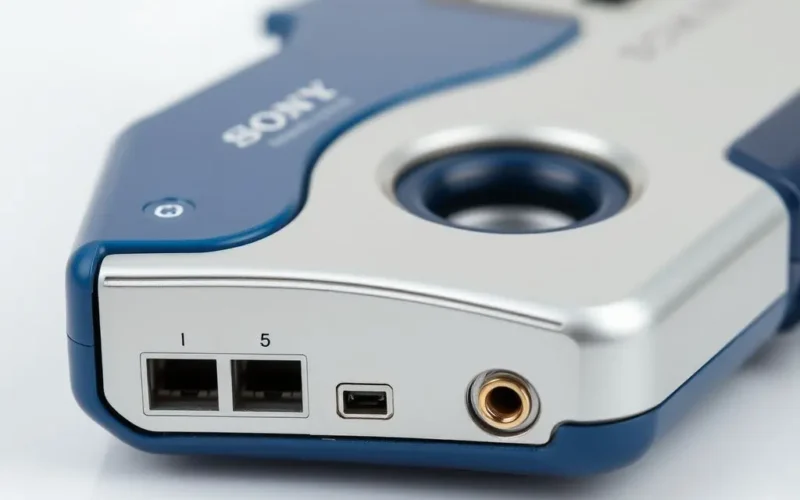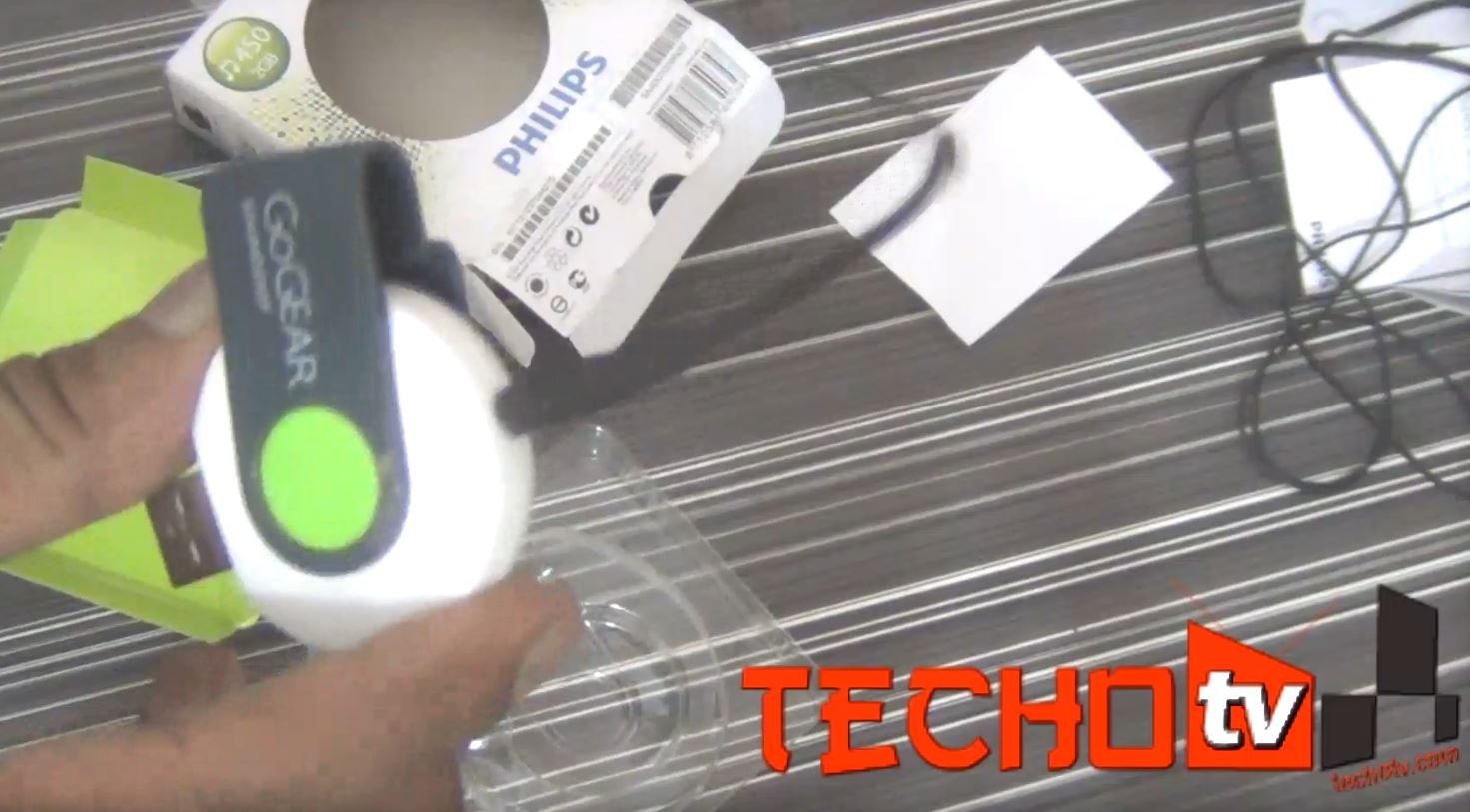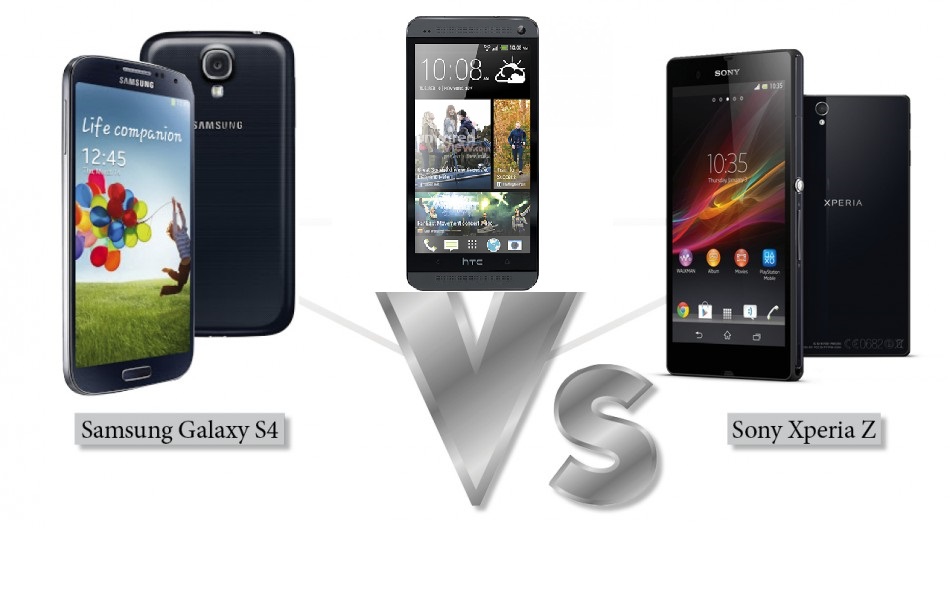Remember a time before streaming playlists and earbuds that disappear into your ear? A time when taking your music with you felt like a magical act of rebellion? That seismic shift in how we experienced sound, how we made our personal world portable, truly began with a unassuming little box.
Meet the Sony Walkman, the original disruptor, the device that didn’t just play music; it unleashed it from the confines of rooms and bulky stereos. It wasn’t merely a piece of technology; it was, for many, their first taste of true audio freedom. Suddenly, the soundtrack to your life wasn’t dictated by where you were, but where you wanted to go. Walking down the street, riding the bus, lounging in a park – your favorite tunes were right there with you, creating an intimate bubble of sound in an often-noisy world.
This iconic invention ushered in the glorious analog age of cassette tapes, click-clacking buttons, and those instantly recognizable foam-covered headphones. It wasn’t just a gadget; it was a cultural phenomenon that paved the way for every portable CD player, MiniDisc, iPod, smartphone, and the vast ocean of streaming services we rely on today. The Walkman’s legacy isn’t just in electronics; it’s in the very concept of carrying your personal world of sound with you, always on the go. It was, and remains, the original soundtrack of freedom.
If you’re feeling a little nostalgic for this trip down tech memory lane, we’ve put together a quick visual bite that captures the essence of this revolutionary device. Take a look:
Now, let’s dive deeper into the remarkable story of how this humble cassette player changed everything.
Table of Contents
The Spark of an Idea: Music On the Go
The story of the Walkman isn’t just about transistors and magnetic tape; it begins with a simple, human desire. Akio Morita, one of Sony’s visionary co-founders, was a busy man who loved classical music, particularly opera. He frequently traveled for business and found himself frustrated that he couldn’t enjoy his stereo recordings while flying or commuting. He wanted a portable way to listen to high-fidelity stereo sound privately.
He presented this need to his engineers, notably Masaru Ibuka (the other co-founder), who had previously developed a portable monaural cassette recorder called the Pressman (model TC-D5). Ibuka’s team took the Pressman and, rather than designing a new device from scratch, modified it. They removed the recording function and the built-in speaker, focusing solely on playback. The goal was high-quality stereo sound through headphones, in a package small enough to carry.
Initial prototypes were created, and Morita was reportedly thrilled with the result. The idea was simple yet profound: personal, high-quality stereo listening, anywhere, anytime.
Birth of an Icon: The TPS-L2 Arrives
Despite Morita’s enthusiasm, launching a product that couldn’t record and didn’t have external speakers was a tough sell internally. Sales staff were skeptical, questioning who would buy a cassette player just for listening with headphones. It defied conventional wisdom about what a music player should do.
But Morita was resolute. He believed in the concept of personal audio space. He reportedly ordered 30,000 units for the initial launch and took a hands-on approach to marketing, even giving units to Sony employees to demonstrate its appeal and create buzz. The device was initially known by different names in various markets, such as “Soundabout” in the US and “Freestyle” in Sweden, but eventually, the name ‘Walkman’ stuck globally.
On July 1, 1979, the first Sony Walkman, the TPS-L2, hit the market in Japan. Its design was striking for its time: a blue and silver metal casing, lightweight yet durable. It featured two headphone jacks – a nod to shared listening, perhaps, or maybe just a feature carried over from prototypes based on recorders – and a unique orange “Hot Line” button. This button, when pressed, activated a small microphone, lowering the music volume slightly and allowing two listeners using the headphone jacks to talk to each other without removing their headphones.

The TPS-L2 was priced around ¥33,000 (approximately $150 USD at the time). Despite internal doubts, its initial run sold out quickly, proving that Morita’s intuition about the desire for personal, portable music was spot on.
More Than Music: A Cultural Revolution
The Walkman wasn’t just successful as a product; it triggered a massive cultural shift. Before the Walkman, listening to music was largely a communal or stationary activity. Stereos were fixtures in living rooms, and headphones, while they existed, were often bulky accessories used mainly by audio professionals or hobbyists at home.
The Walkman made personal listening mainstream. It allowed people to curate their own audio environment while moving through public spaces. Commuters could escape the noise of trains and buses, joggers had a rhythmic companion, and teenagers could retreat into their own musical worlds, even in crowded households. It fueled the rise of the headphone as a personal accessory and, in some ways, fostered a sense of individualism in public.

This device fundamentally changed urban landscapes, social interactions, and personal habits. It created the ‘personal bubble’ of sound that we now take for granted. It also significantly boosted the sales of cassette tapes and, later, paved the way for the demand for portable versions of subsequent music formats.
The Analog Age and Beyond
The early Walkman models were inextricably linked with the compact cassette tape, a format that offered decent audio quality in a convenient, portable package. The act of creating mixtapes became a cultural phenomenon in itself, a way to share personal tastes and connect with others before the age of digital playlists.
Sony didn’t rest on its laurels. The Walkman line evolved, adapting to new technologies. There were Walkman models for CDs (Discman, though often still referred to as Walkman), MiniDiscs, and eventually, digital audio players long before the iPod dominated the market. Each iteration carried the torch of portability and personal listening first lit by the TPS-L2.

Frequently Asked Questions About the First Walkman
Let’s address some common questions about this legendary device:
- When was the first Sony Walkman released? The original cassette Walkman, the TPS-L2, was released on July 1, 1979, in Japan.
- Who invented the Sony Walkman? While often attributed to Akio Morita’s vision and Masaru Ibuka’s engineering team, the core technical development was led by Kozo Ohsone. However, the product’s existence and marketing were heavily driven by Morita.
- How much did the first Walkman cost? The original TPS-L2 retailed for ¥33,000 in Japan, which was roughly equivalent to $150 USD at the time (note: this value doesn’t account for inflation).
- What made the Walkman so revolutionary? Its revolution lay in making high-quality stereo music listening private and portable for the average consumer, fundamentally changing personal music consumption and creating the concept of a portable soundtrack for life.
- Did the first Walkman have a speaker or recording function? No, the key innovation was removing these features from existing portable recorders to focus purely on lightweight, portable stereo playback through headphones.
The Echo of Freedom
Looking back from our era of ubiquitous digital music players and streaming services, it’s easy to overlook the magnitude of the Walkman’s impact. It didn’t just shrink a stereo system; it expanded personal freedom. It allowed individuals to curate their acoustic environment, making the world their personal soundstage. Every person you see today walking with earbuds or headphones owes a debt to that little blue and silver box from 1979. The Sony Walkman wasn’t just the first portable music player; it was the device that taught the world to take its music wherever it goes, leaving an indelible mark on technology, culture, and the very idea of a personal soundtrack.





